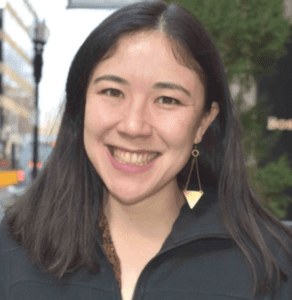November 2020 Research Profile
This month we are highlighting Anne Calef, a research fellow at Boston Indicators, where her work focuses on the impact of the COVID-19 pandemic on the Greater Boston region. Anne explains the work of the Covid Community Data Lab.

Anne Calef
BARI: Can you start just by telling me a little bit about the COVID Community Lab and the research?
Anne: The COVID Community Data Lab (CCDL) is a partnership with the Center for Housing Data at the Massachusetts Housing Partnership (MHP) and Boston Indicators, with contributions from the UMass Donohue Institute. It began in early May intending to provide the best, creative data sources to understand the impact of the COVID19 pandemic on Greater Boston and help shape an inclusive recovery.
CCDL consists of two parts, a series of research briefs written by the Boston Indicators or MHP teams and a repository of charts and graphs analyzing real-time data sources. Our research covers a broad range of topics, including an equity analysis of confirmed COVID-19 cases, housing, economic impacts, demand for social assistance, and mobility patterns.
BARI: Were you surprised at any of the data revealed to you? What story does the data tell?
Anne: Since May, there have been many things that surprised us. When we first disaggregated the MBTA data, it was interesting to see the stark difference between the Blue Line and other subway lines. It was also surprising to see the distinction between population density and crowding in UMass Donohue Institute’s analysis of COVID-19 positive cases.
More recently, it was interesting to see how median rent has decreased in inner core neighborhoods while increasing in lower-cost markets. Our colleague Tom Hopper at MHP wrote about this trend in a recent brief.
Together, the data tells a story of a region hit hard by the pandemic with some communities bearing a heavier burden than others. Recovery has slowed in the fall and we continue to see high demand for critical social services (unemployment insurance, food assistance).
BARI: How has the response been to the COVID Community Lab’s work so far? How do you hope the public engages with it moving forward?”
Anne: We’ve been fortunate to have a positive response to the COVID Community Data Lab so far and hope to continue to grow the project through partnerships with other organizations serving the Greater Boston area. Some of our more popular briefs have been a collaboration with Project Bread and Children’s HealthWatch on food insecurity during the pandemic as well as MHP Center for Housing Data’s brief on rental market trends.
BARI: Are there any recommendations for policymakers based on this research?
Anne: One broad theme worth noting is the importance of expanded social assistance programs. Early on, we observed the $1200 stimulus checks help people stay in their homes. After the CARES Act’s Pandemic Unemployment Compensation provision, which automatically added $600 per week to unemployment benefits, ended in July there was a spike in applications for food assistance programs (primarily SNAP). Pandemic-EBT and expansions to SNAP have been critical as food insecurity grows but, like unemployment insurance, they do not reach everyone. We would urge policymakers to strengthen social assistance programs and eliminate barriers to participation. Finally, after the eviction moratorium ended in mid-October, we saw a spike in 211 calls for housing-related assistance, indicating growing anxiety and need across the state. CCDL is monitoring eviction case filings as they come in, but the policymakers must help all individuals stay in their homes.
BARI: What are some upcoming projects?
Anne: This week we are releasing a brief on bus ridership trends in the area, focusing specifically on the fifteen MBTA routes with the highest level of sustained ridership (weekday ridership in 2020 as a percent of weekday ridership in 2019). Later in November, we hope to release a new housing brief focusing on housing stability as well as a brief on the impact of COVID19 on arts organizations. In early 2021, we are planning a larger project on how housing and mobility patterns have shifted since the pandemic began.



















